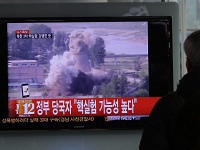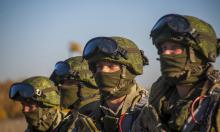North Korea increases missile potential
Against the backdrop of recent deterioration of the relations between South Korea, DPRK and the U.S. associated with the UN resolution and the trainings on the southern half of the Korean Peninsula, the question about the threat of North Korean missiles becomes relevant. Mostly, this threat is related to the possibility of Pyongyang using ballistic missiles to deliver nuclear warheads.
Even disregarding the fact that North Korea currently does not possess ICBMs (intercontinental ballistic missiles), deployment of this type of weapons at the head of tactical missiles and tactical systems causes neighbors to bring their armed forces to alert after any belligerent statements.

Medium-range missiles KN-08 with a range of 4,000-5,000 km, BM25 (silo-based) and "Musudan-1" (on the mobile launcher) are considered the latest long-range missiles in North Korea. BM25 and "Musudan-1" are a bit behind the new KN-08, and can hit targets at a distance of 2,500-4,000 km. According to some sources, Kim Jong-un's army has 12-16 launchers and 50 missiles at its disposal.
Next comes "Taepodong-1" (2,200-2,000 km) that has a major drawback - it must be fueled for a long time right before the launch. These units are placed on the launch pads in the amount of 25-30 missiles.
"Nodong" have even shorter range - 900-1,300 km and very low precision CWE - 2.5-3 km. Lack of precision is not that important if nuclear warhead missiles are used for destruction of large areas (like a city). There are 10 CPs and 90-200 missiles available.
They are followed by the operational-tactical and tactical missile systems, most of which are out of date, with the exception of improved versions. First of all, these are complexes "Scud" and "Tochka." "Moon" complexes presented in the armed forces of North Korea have two modifications, SS-1A and SS-1B Scud A under NATO classification. They are able to fire rockets at ranges of 45-70 km. There are 24 CPs available.
The Koreans' need for more accurate and longer range arms was met with the help of Soviet R-17 systems "Elbrus" (Scud-B), obtained from Egypt in the late 1970's and early 1980's. They managed to create a copy of the missile with a slightly increased range (from 300 to 330 kilometers) ("Hwasong-5"). Next, even longer range rocket "Hwasong-6" was created, with a range of 500 km, and "Hwasong-7" (Scud-ER) with a range of 700-800 km. The army has 30 launchers and 180 missiles "Hwasong-5", 700 missiles "Hwasong-6," and an unknown number of "Hwasong-7" and Egyptian missiles.
KN-02 is based on "Tochka." 30 to 50 launchers were produced. Some missiles range from 110-120 up to 140 km.
North Korea's missile arsenal can be a serious threat to the entire region, which is greatly enhanced by the presence of nuclear weapons. Only the top military leadership of the Korean People's Army knows how many missiles the army has and what type. Without exaggeration, some Korean missiles are capable of carrying a nuclear warhead that can hit any target not only in South Korea and Japan, but even on the island of Guam, which is a territory of the United States with a major military base for strategic bombers. In this regard, there is nothing surprising in such close attention to the situation on the Korean peninsula, because any conflict there could escalate into a global nuclear war.
Aleksander Serdyuk
Pravda.Ru
Subscribe to Pravda.Ru Telegram channel, Facebook, RSS!


